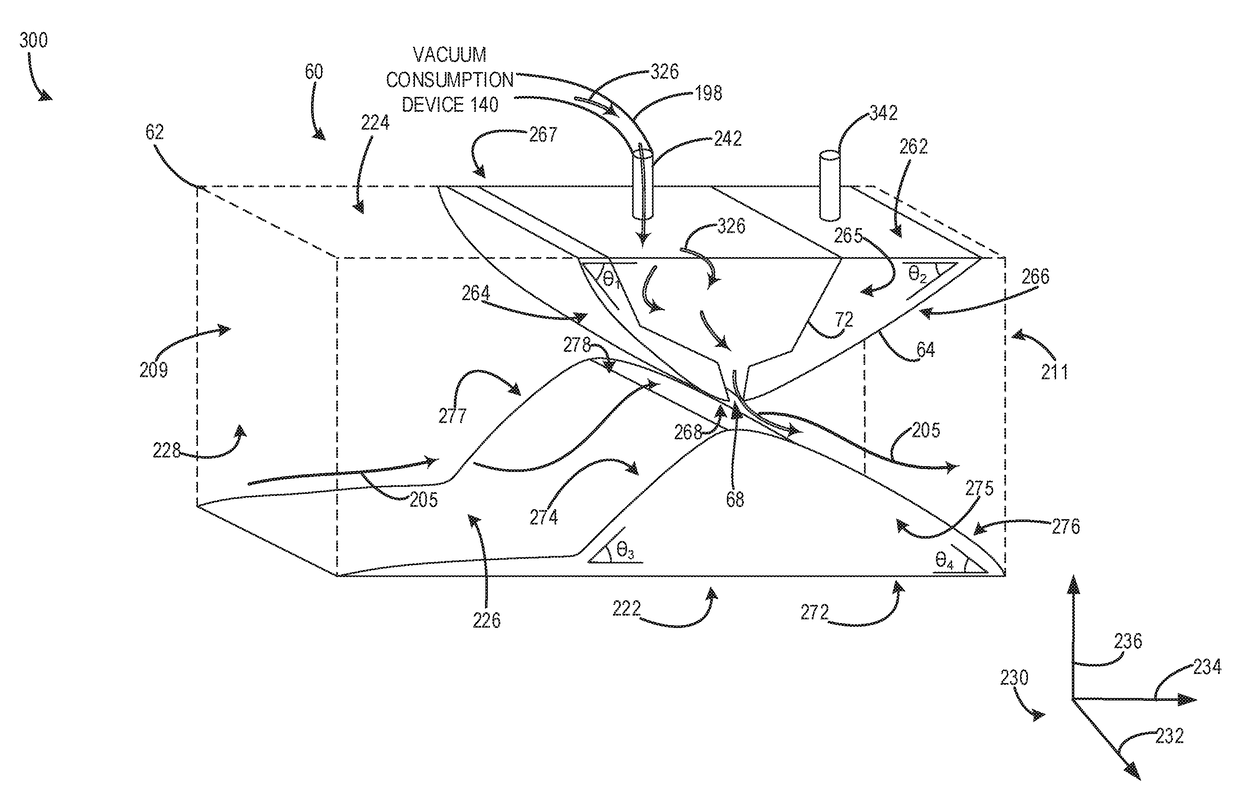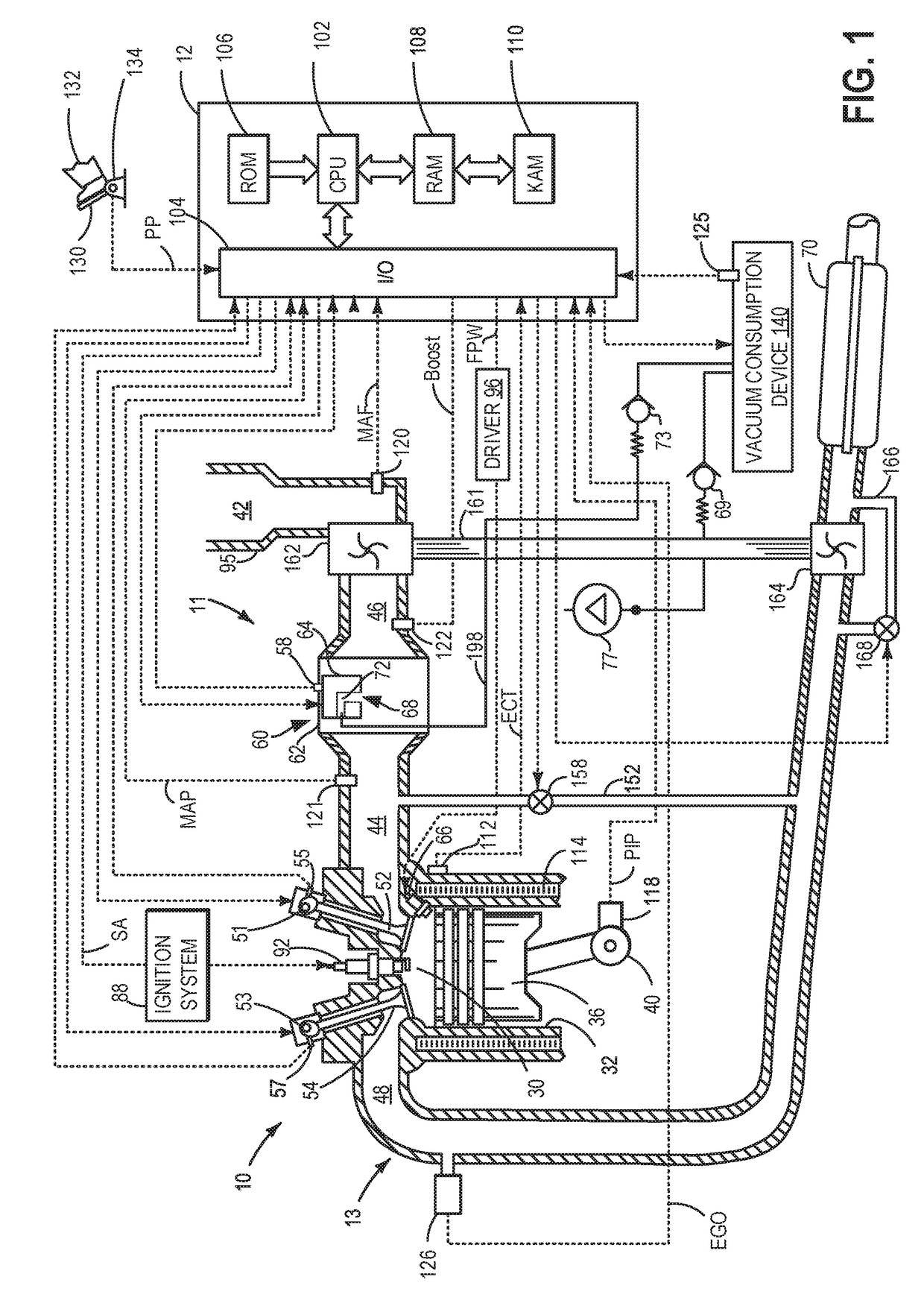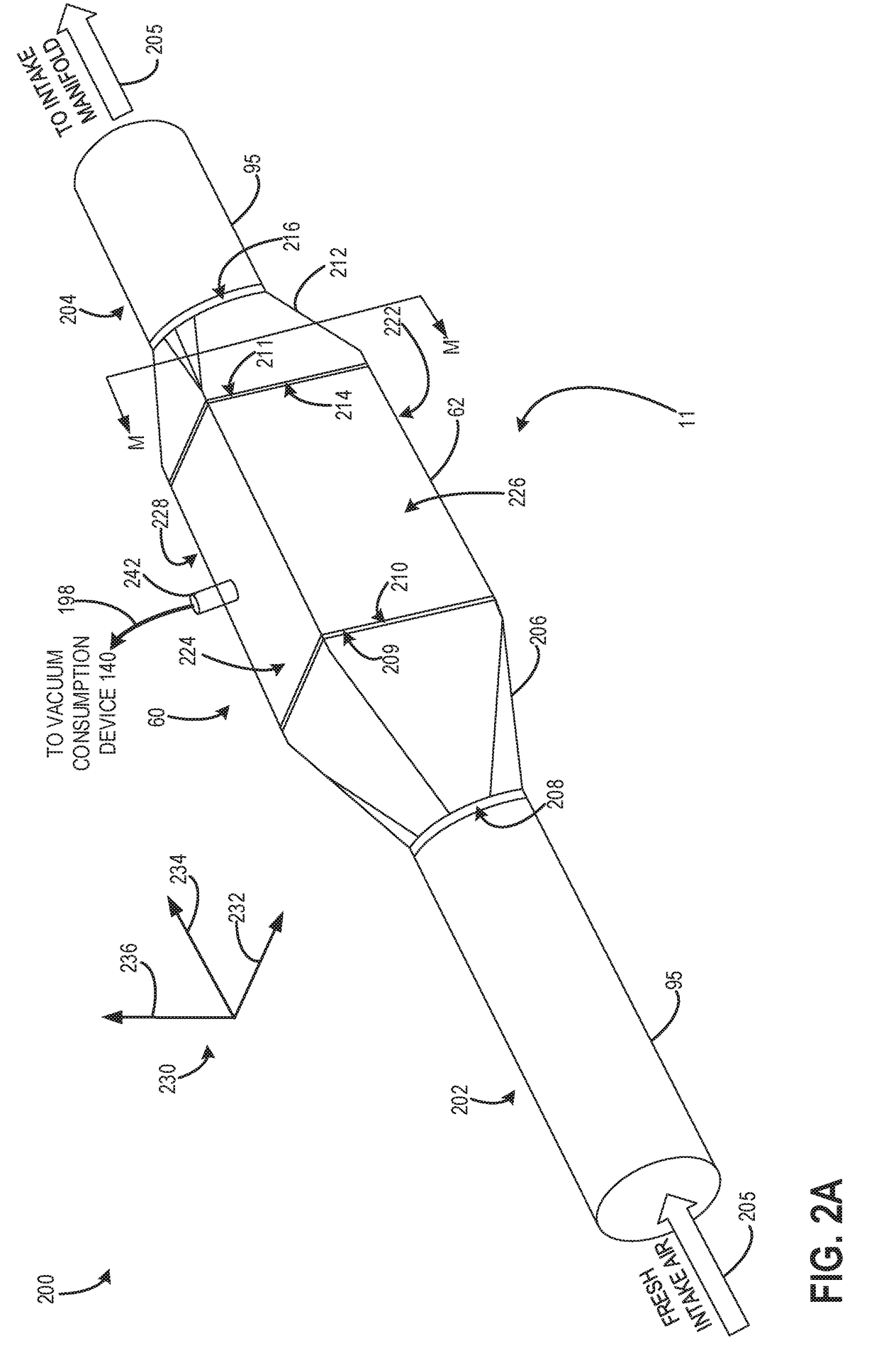Method and system for vacuum generation using a throttle body comprising a slidable throttle valve
- Summary
- Abstract
- Description
- Claims
- Application Information
AI Technical Summary
Benefits of technology
Problems solved by technology
Method used
Image
Examples
first embodiment
[0043]FIGS. 2A and 2B illustrate side perspective views of a portion of engine intake 11 of engine 10 of FIG. 1 that includes throttle 60. As such, components previously introduced in FIG. 1 are numbered similarly in FIGS. 2A and 2B and may not be reintroduced.
[0044]FIG. 2A shows an exterior side perspective view 200 of throttle 60 incorporated in intake conduit 95 within engine intake 11. FIG. 2B shows an interior side perspective view 250 of the throttle 60. Specifically, FIG. 2B shows the same side perspective view of throttle 60 shown in FIG. 2A, except that in FIG. 2B, the throttle 60 is illustrated as transparent, so as to expose the throttle valve 64 and interior of the throttle 60. FIGS. 2A and 2B may therefore be described together in the description herein.
[0045]In the description herein, axis system 230 may be used to describe the relative positioning of components of the throttle 60. The axis system 230 may comprise a vertical axis 236, a longitudinal axis 234, and a lat...
second embodiment
[0079]FIG. 3B shows an internal side perspective view 350 of the throttle 60. FIG. 3B is substantially similar to FIG. 3A, however, the hollow interior passage 72 and the opening 68 are located in with the flange 240. Specifically FIG. 3B shows the internal structure of the flange 240, including the hollow interior passage 72 located therein. Hollow interior passage 72 may fluidically couple the shaft 242 to the opening 68. As such, gasses from the vacuum consumption device 140 may flow into the interior passage 72 via the shaft 242, and may then exit the interior passage 72 and flange 240 via the opening 68. Interior passage 72 may define a volume of the flange 240. Portions of the flange 240 not including the interior passage 72 may not be hollow. Shaft 242 may extend into the interior of the passage 72 from outside the throttle body 62.
[0080]A front side surface 265 of the throttle valve 64 may be in sealing contact with the front side wall 226 of the throttle body 62. Further a ...
embodiment 400
[0091]FIG. 4A shows an embodiment 400, where throttle valve 64 is in the open first position. Airflow through the throttle body 62 may be greater with the throttle valve 64 in the open first position than any other throttle position. Thus, the position of the throttle valve 64 shown in FIG. 4A may be referred to as a fully open position. Throttle valve 64 may not overlap with the flange 240. More precisely, a given cross-section of the throttle body 62 taken along the vertical axis 236, may not include both the flange 240 and throttle valve 64, when the throttle valve is adjusted to the open first position. Said another way, no portion of the throttle valve 64 may be positioned over any portion of the flange 240. However, in other examples, some overlap between the throttle valve 64 and the flange 240 may exist in the open first position. As such, a narrowing of the throttle body 62 may be less in the open first position, than more closed positions, and airflow through the throttle ...
PUM
 Login to View More
Login to View More Abstract
Description
Claims
Application Information
 Login to View More
Login to View More - R&D
- Intellectual Property
- Life Sciences
- Materials
- Tech Scout
- Unparalleled Data Quality
- Higher Quality Content
- 60% Fewer Hallucinations
Browse by: Latest US Patents, China's latest patents, Technical Efficacy Thesaurus, Application Domain, Technology Topic, Popular Technical Reports.
© 2025 PatSnap. All rights reserved.Legal|Privacy policy|Modern Slavery Act Transparency Statement|Sitemap|About US| Contact US: help@patsnap.com



